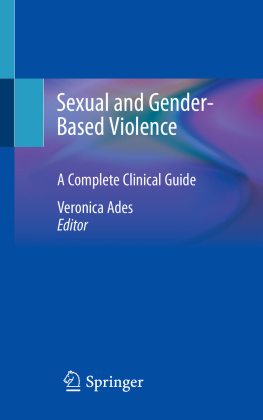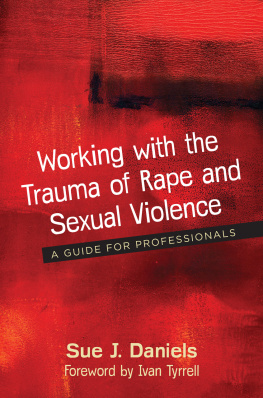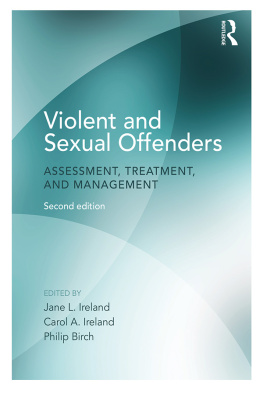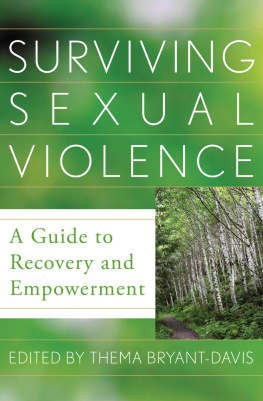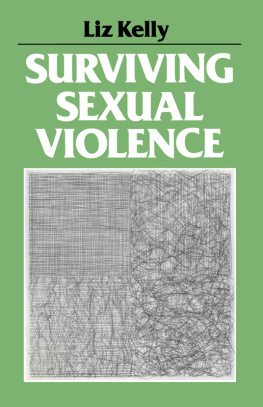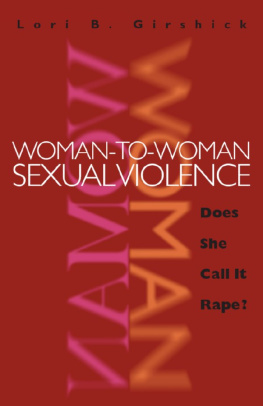Why This Book Is Needed
As an obstetrician-gynecologist, I never received any explicit training on sexual trauma. Although I learned to perform pelvic exams, care for pregnant women, and discuss sensitive and taboo subjects like sex, contraception, abortion, and reproduction, trauma itself was never taught. During my medical school and residency training in New York City, I came across young women who were diagnosed with bipolar disorder or other serious psychiatric illnesses in their teens but who did not seem to fit the clinical picture. When I was able to spend more time with these patients, I found that they nearly always had a history of sexual violence and that they had residual anger from that trauma.
I also treated many women with a history of female genital cutting and learned how to evaluate and manage these patients under one of my mentors, Dr. Nergesh Tejani. During my global health work in Uganda, South Sudan, and Jordan, I came across many forms of sexual and gender-based violence, including rape, incest, and intimate partner violence. In my first position as faculty, I treated a patient who had been sex trafficked, and her plight inspired me to start the EMPOWER Clinic for Survivors of Sex Trafficking and Sexual Violence at Gouverneur Health in 2013.
What I learned through this clinic is that trauma has not only mental health consequences but physical sequelae as well. Through experience, I learned how to take a trauma history, how to perform a trauma-sensitive gynecological examination, and how to incorporate trauma awareness into the management of various obstetric and gynecologic conditions. I realized that trauma-informed care, like other aspects of medical care, requires explicit training, supervision, and knowledge.
The authors of the chapters in this book are all experts in different fields. Some are medical providers, while some are mental health clinicians. Nonclinical authors include two lawyers (a former public defender and a former prosecutor) and an advocate and community organizer. The chapter topics were specifically chosen to cover areas that medical providers may not be familiar with, such as legal aspects, or additions to the clinical expertise that medical providers already have. Some readers may choose to read the book in its entirety, while others may select chapters that are relevant to them in the moment. The book is intended to be a concise clinical guide in order to help providers treating sexual and gender-based violence (SGBV) survivors to provide trauma-informed care.
A Word About Terminology
The terminology used in this book was carefully considered. The issues covered in this book are relevant across many nations, cultures, and communities. While the authors and editors are located in the United States, our increasingly globalized world allows information to be transmitted quickly and easily in ways that were not possible even in the recent past. However, terminology, even in English-predominant environments, is neither consistent nor universally accepted. Language is a constantly evolving organism, and terms become outdated more quickly than in the past. Our intention in this book is to be as clear, concise, sensitive, and widely comprehensible as possible.
Women and LGBTQ
In nearly all of the chapters in this book, we avoided the use of gendered pronouns in order to create a more inclusive text. However, in three of the chapters, the content was difficult to communicate without the use of a gendered pronoun: Family Planning, The Trauma-Informed Examination, and Female Genital Cutting. These chapters discussed medical circumstances in which the majority of patients are cisgender women, and therefore, female pronouns are used. We recognize that not all patients receiving gynecological care identify as women. In clinical situations, individuals pronouns should always be respected, and we encourage providers to be mindful of the spectrum of gender diversity that exists among patients.
That said, merely eliminating the use of gendered pronouns in this book would be inadequate for the subject matter. Gender plays an important role in the perpetration of sexual and gender-based violence. As defined by the United Nations High Commissioner for Refugees, SGBV refers to any act that is perpetrated against a persons will and is based on gender norms and unequal power relationships [1]. While men can be victims of SGBV, it is by and large a phenomenon perpetrated by men against women. Women worldwide have less social, economic, political, physical, and individual power than men.
Individuals who violate gender norms are often at risk of violence. This can include women who seek education and independence, people in same-sex and non-hetero-normative relationships, or individuals who do not conform to gender stereotypes in appearance, dress, or mannerism. Transgender and gender-nonconforming individuals, while a small proportion of the total population, are at increased risk of SGBV. While challenging rigid gender norms and expectations, societal stigma may impede their access to SGBV-related services. Therefore, SGBV is a gendered phenomenon, and the effect of sex and gender cannot be ignored.
FGM/FGC
Female genital cutting has a number of different terms. It can be referred to as female genital mutilation (FGM), often used in advocacy circles to highlight the destructiveness of the practice. Female genital cutting (FGC) is similar but potentially more neutral. Female circumcision is a common colloquial term, but one that I do not use, in order to avoid confusion with male circumcision, which is a very different practice. The French term for the practice translates to excision. Many women only know it by a local name in their tribal language and may not be aware of the existence of a global term. In my clinical practice, I use female genital cutting to avoid offending patients who may not feel that they are mutilated. If a patient uses a specific term, I will echo her use of that term. In this book, we used female genital mutilation/ female genital cutting (FGM/FGC), which is now the internationally accepted term for the practice and most likely recognized worldwide.

